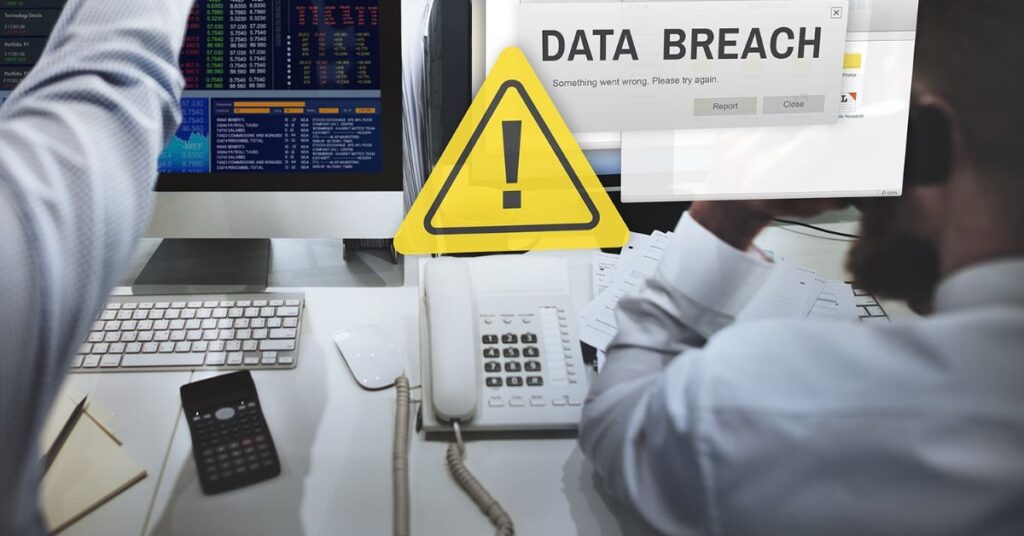In today’s digital age, data breaches have become an alarming reality. The recent thejavasea.me leaks have sent shock waves through the cyber security world, exposing vulnerabilities in even the most robust systems. These breaches not only compromise sensitive information but also shake the foundations of trust in our digital ecosystem.
Understanding the intricacies of thejavasea.me leaks and the AIO-TLP classification system is crucial for businesses and individuals alike. This comprehensive guide delves into the nature of these breaches, their far-reaching impacts, and essential strategies to safeguard your digital assets.
From dissecting the anatomy of thejavasea.me leaks to exploring cutting-edge security measures, we’ll equip you with the knowledge to navigate this treacherous digital landscape. Join us as we unravel the complexities of data breaches and empower you to protect what matters most in our interconnected world.
Also read this blog: https://bagispack.com/tech-the-hometrotters-your-guide-to-innovation/
Understanding thejavasea.me Leaks: An Overview
What are the javasea.me leaks?
Thejavasea.me leaks refer to a series of significant data breaches that have recently rocked the digital world. These leaks involve the unauthorized access and exposure of sensitive information from various organizations and individuals. The breaches typically target vulnerabilities in web applications, databases, or network infrastructure, allowing hackers to extract valuable data.
How do these leaks occur?
These leaks often result from a combination of factors. Cybercriminals exploit software vulnerabilities, weak passwords, or social engineering tactics to gain access to systems. Once inside, they can move laterally through networks, escalate privileges, and exfiltrate data. Common attack vectors include:
- SQL injection attacks
- Cross-site scripting (XSS)
- Phishing campaigns
- Malware infections
- Insider threats
The scale and scope of the breaches
The thejavasea.me leaks have been massive in scale, affecting millions of users across various sectors. These breaches have compromised:
- Personal identifiable information (PII)
- Financial data
- Login credentials
- Proprietary business information
- Healthcare records
The scope of these breaches extends beyond immediate data loss. They often lead to secondary attacks, identity theft, and long-term reputational damage for affected organizations. The far-reaching consequences underscore the critical need for robust data breach prevention strategies.
Also read this blog: https://bagispack.com/2607fb9115af735062-the-mysterious-world-of-ip-addres/
What is AIO-TLP? Decoding the Threat Level System
Definition of AIO-TLP (All-In-One Threat Level Purple)
AIO-TLP stands for All-In-One Threat Level Purple. It’s a comprehensive classification system designed to assess and communicate the severity of data breaches and cyber threats. This system combines various threat indicators into a single, easily understandable framework.
Significance of “Threat Level Purple” in data breaches
The “Purple” designation in AIO-TLP signifies the highest level of threat severity. It indicates:
- Critical system compromise
- Widespread data exposure
- immediate and severe consequences
- Urgent need for response and mitigation
When a breach is classified as Threat Level Purple, it demands immediate attention and resources from all stakeholders involved in cybersecurity.
How AIO-TLP helps classify breach risks
AIO-TLP provides a standardized method for categorizing breach risks. It considers factors such as:
- Data sensitivity
- Breach scale
- Potential impact
- Complexity of the attack
By using this system, organizations can:
- Quickly assess the severity of a breach.
- Prioritize response efforts
- Allocate resources effectively.
- Communicate risk levels to stakeholders clearly.
The AIO-TLP framework enables better decision-making and more efficient incident response in the face of complex cyber threats.
The impact of the Javasea.me leaks on businesses and individuals
Business consequences: financial and reputational risks
The thejavasea.me leaks can have devastating effects on businesses. Financial impacts include:
- Direct costs of breach mitigation and recovery
- Potential fines and legal fees
- Loss of business due to downtime
- Decreased customer trust leading to reduced revenue
Reputational damage can be even more severe and long-lasting.
- Negative media coverage
- Loss of customer confidence
- Difficulty in attracting new clients
- Strained relationships with partners and suppliers
These consequences highlight the importance of proactive data breach prevention measures for businesses of all sizes.
Personal risks: identity theft and privacy concerns
For individuals, the thejavasea.me leaks pose significant personal risks:
- Identity theft: Criminals can use stolen personal information to:
- Open fraudulent accounts
- Make unauthorized purchases
- File false tax returns
- Privacy breaches: Exposed personal data can lead to:
- Harassment or stalking
- Reputational damage
- emotional distress
- Financial losses: victims may face:
- Unauthorized charges
- Drained bank accounts
- Damaged credit scores
Broader implications for the digital ecosystem
The thejavasea.me leaks have far-reaching effects on the entire digital landscape.
- Erosion of trust in online services
- Increased skepticism towards data collection practices
- Pressure on businesses to improve security measures
- Calls for stricter data protection regulations
- Acceleration of cybersecurity innovation and investment
These broader impacts underscore the need for a collective approach to data breach prevention and response.
Key Security Measures to Prevent Data Breaches

Importance of proactive security audits
Regular security audits are crucial for identifying and addressing vulnerabilities before they can be exploited. Key aspects of effective audits include:
- Comprehensive system scans
- Penetration testing
- Code reviews
- Risk assessments
- Compliance checks
By conducting thorough audits, organizations can stay ahead of potential threats and strengthen their overall security posture.
Role of encryption and data protection tools
Encryption and data protection tools form a critical line of defense against data breaches. Essential measures include:
- End-to-end encryption for data in transit
- Strong encryption for stored data
- Multi-factor authentication (MFA)
- Virtual Private Networks (VPNs)
- Data Loss Prevention (DLP) solutions
Implementing these tools helps safeguard sensitive information, even if other security measures fail.
Employee awareness and training programs
Human error remains a significant factor in many data breaches. Effective employee training programs should cover:
- Recognizing phishing attempts
- Creating strong passwords
- Safe browsing habits
- Proper handling of sensitive data
- Incident reporting procedures
Regular training sessions and simulated phishing tests can significantly reduce the risk of successful attacks through social engineering.
Responding to thejavasea.me leaks: best practices
Developing an incident response plan
A well-crafted incident response plan is essential for effectively managing data breaches. Key components include:
- Clear roles and responsibilities
- Step-by-step response procedures
- Communication protocols
- Resource allocation guidelines
- Regular testing and updates
Having a solid plan in place ensures a swift and coordinated response when a breach occurs.
Containment and mitigation strategies
Quick action is crucial to limit the damage of a data breach. Effective containment strategies involve:
- Isolating affected systems
- Revoking compromised credentials
- Patching vulnerabilities
- Enhancing monitoring for further intrusions
- Preserving evidence for investigation
Timely implementation of these measures can significantly reduce the impact of a breach.
Communication with affected stakeholders and the public
Transparent and timely communication is vital during a data breach. Best practices include:
- Prompt notification of affected individuals
- Clear explanation of the breach and its potential impacts
- Guidance on steps to protect personal information
- Regular updates on the situation and remediation efforts
- Establishment of dedicated communication channels for inquiries
Effective communication helps maintain trust and minimizes reputational damage.
Regulatory Compliance and Legal Implications of Data Breaches

Overview of key data protection regulations (e.g., GDPR, CCPA)
Understanding relevant data protection laws is crucial for a proper breach response. Key regulations include:
- General Data Protection Regulation (GDPR)
- California Consumer Privacy Act (CCPA)
- Health Insurance Portability and Accountability Act (HIPAA)
- Payment Card Industry Data Security Standard (PCI DSS)
Each regulation has specific requirements for data protection and breach notification.
Legal responsibilities after a breach
Organizations have several legal obligations following a data breach:
- Timely notification of affected individuals
- Reporting to relevant authorities
- Providing credit monitoring services (in some cases)
- Cooperating with investigations
- Implementing corrective measures
Failure to meet these responsibilities can result in severe penalties and legal action.
Reporting breaches to regulatory bodies
Proper breach reporting is essential for compliance. Key steps include:
- Identifying relevant regulatory bodies
- Gathering required information about the breach
- Submitting reports within mandated time frames
- Providing updates as new information becomes available
- Documenting all communication with regulators
Adhering to reporting requirements helps organizations demonstrate due diligence and avoid additional penalties.
Building Resilience: Steps to Protect Data in the Future
Continuous system updates and vulnerability assessments
Maintaining up-to-date systems is crucial for long-term data protection. Key practices include:
- Regular software patching
- Automated vulnerability scanning
- Timely hardware upgrades
- Continuous monitoring for new threats
- Regular security assessments
These measures help organizations stay ahead of evolving cyber threats and minimize vulnerabilities.
Enhancing cyber security frameworks
Robust cyber security frameworks provide a comprehensive approach to data protection. Essential components include:
- Risk management processes
- Access control policies
- Data classification systems
- Incident response procedures
- Third-party risk management
Regularly reviewing and enhancing these frameworks ensures ongoing resilience against data breaches.
Long-term strategies for data protection and leak prevention
Building a culture of security is vital for sustainable data protection. Long-term strategies should focus on:
- Integrating security into development processes (DevSecOps)
- Implementing zero-trust security models
- Investing in advanced threat detection technologies
- Fostering collaboration between IT and security teams
- Continuous employee education and awareness programs
By adopting these strategies, organizations can significantly reduce their risk of falling victim to future data breaches like the thejavasea.me leaks.
FAQ’S
What is the best strategy to limit data leaks?
The best strategy is proactive security audits, encryption, employee training, and continuous system updates to identify vulnerabilities and prevent breaches.
How can data leaks be prevented?
Data leaks can be prevented through regular security audits, strong encryption, employee training, robust access controls, timely software updates, and implementing multi-factor authentication to protect sensitive information.
What is the problem with the data leak?
Data leaks expose sensitive information, leading to identity theft, financial loss, reputational damage, and legal consequences for businesses and individuals.
Conclusion
The thejavasea.me leaks serve as a stark reminder of the ever-present threat of data breaches in our digital world. By understanding the nature of these leaks, the AIO-TLP classification system, and implementing robust security measures, individuals and organizations can significantly reduce their vulnerability to such attacks.
Staying vigilant, regularly updating security protocols, and fostering a culture of cybersecurity awareness are crucial steps in safeguarding sensitive information. As we continue to navigate an increasingly complex digital landscape, the knowledge and strategies outlined in this guide provide a solid foundation for protecting our data and maintaining trust in our interconnected world.

BagisPack.com: Your ultimate travel companion. Explore expert travel tips, packing guides, and destination insights. Empowering adventurers with essential advice for seamless journeys around the globe.








